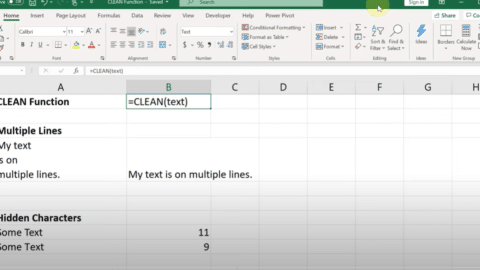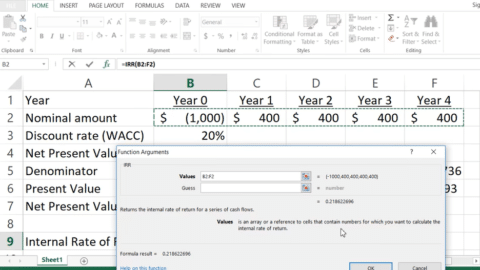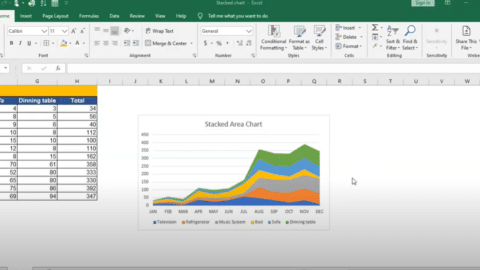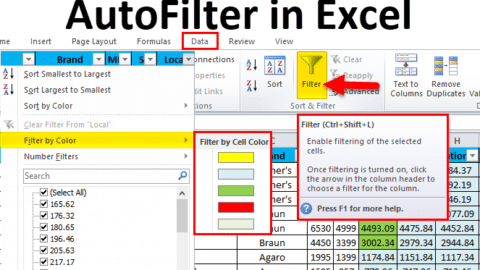Degrees Function in Excel: Simplify Your Calculations
Do you work with angles in Excel and find yourself constantly converting between radians and degrees? Look no further than the Degrees function in Excel! This function simplifies calculations involving angles in degrees, saving you time and reducing the risk of errors. In this article, we’ll explore the Degrees function in Excel and how it can help you with your calculations.
Table of Contents
Introduction
Excel is a powerful tool for data analysis, but it can be frustrating when you need to perform calculations involving angles. While Excel uses radians as the default unit for angles, many of us are more comfortable with degrees. This is where the Degrees function comes in handy. The Degrees function converts radians to degrees, making it easier to work with angles in Excel.
Here are some benefits of using the Degrees function in Excel:
- Saves time by eliminating the need for manual conversion
- Reduces the risk of errors in calculations
- It allows you to work with angles in the unit you’re most comfortable with
Now let’s dive deeper into the Degrees function and see how it works.
How to Use the Degrees Function in Excel
Using the Degrees function in Excel is simple. The syntax for the function is as follows:
=DEGREES(angle)
The argument angle is the angle in radians that you want to convert to degrees.
For example, if you have an angle of 1.5708 radians (which is equivalent to 90 degrees), you can use the Degrees function as follows:
=DEGREES(1.5708)
The result will be 90 degrees.
You can also use a cell reference instead of a numerical value for the angle argument. For example, if your angle is in cell A1, you can use the following formula:
=DEGREES(A1)
This will convert the angle in cell A1 from radians to degrees.
Examples of Using the Degrees Function in Excel
Let’s take a look at some practical examples of using the Degrees function in Excel.
Example 1: Finding the Angle Between Two Points
Suppose you have two points on a graph and you want to find the angle between them. You can use the ATAN2 function to calculate the angle in radians, and then use the Degrees function to convert the result to degrees.
Here’s how you can do it:
- Enter the x and y coordinates of the two points in cells A1 to B2.
- Use the following formula to calculate the angle in radians:
=ATAN2(B2-B1,A2-A1)
- Use the Degrees function to convert the angle to degrees:
=DEGREES(ATAN2(B2-B1,A2-A1))
The result will be the angle between the two points in degrees.
Example 2: Finding the Angle of a Right Triangle
Suppose you have a right triangle with a known adjacent side and opposite side and want to find the angle between the hypotenuse and the adjacent side. You can use the ATAN function to calculate the angle in radians and then use the Degrees function to convert the result to degrees.
Here’s how you can do it:
- Enter the length of the adjacent side in cell A1 and the length of the opposite side in cell A2.
- Use the following formula to calculate the angle in radians:
=ATAN(A2/A1)
- Use the Degrees function to convert the angle to degrees:
=DEGREES(ATAN(A2/A1))
The result will be the angle between the hypotenuse and the adjacent side in degrees.
Tips and Tricks for Using the Degrees Function in Excel
Now that you know how the Degrees Function in Excel works, let’s explore some tips and tricks for using it effectively:
- Keep your formulas simple: The Degrees Function in Excel is a straightforward tool, so there’s no need to overcomplicate your formulas. Use simple inputs and let the function do the heavy lifting.
- Use cell references: If you have a large dataset, it’s often easier to use cell references instead of typing out every value manually. Simply select the cells containing your radians, and use the Degrees Function in Excel to convert them all at once.
- Use formatting options: To make your data more readable, consider using Excel’s formatting options. You can use the Format Cells dialog box to apply custom number formatting or to add units to your values.
- Check your units: When working with angles, keeping track of your units is essential. Make sure you’re converting from radians to degrees or vice versa, and don’t mix up your units.
- Use the RADIANS Function: If you need to convert degrees to radians, you can use the RADIANS Function in Excel. This function works in the same way as the Degrees Function in Excel but in reverse.
- Practice: The more you use the Degrees Function in Excel, the more comfortable you’ll become with it—practice using the function with different inputs to understand how it works.
FAQs
Degrees Function in Excel
Now that we’ve covered how to use the Degrees function in Excel, let’s look at some frequently asked questions about this function.
FAQ 1: What is the Degrees function in Excel?
The Degrees function in Excel is a built-in function that converts angles in radians to degrees. This function is useful when you need to work with angles in degrees, but your data is in radians.
FAQ 2: What are radians and degrees?
Radians and degrees are two units of measurement for angles. Radians are the default unit in Excel and are defined as the ratio of an arc length to a circle’s radius. Degrees, on the other hand, are based on dividing a circle into 360 equal parts.
FAQ 3: Can the Degrees function convert degrees to radians?
No, the function only converts radians to degrees. If you need to convert degrees to radians, you can use the RADIANS function.
FAQ 4: Can the Degrees function be used in combination with other functions?
Yes, the Degrees function can be combined with other functions to perform more complex angles calculations. For example, you can use the Degrees function with the SIN function to calculate the sine of an angle in degrees.
Hello, I’m Cansu, a professional dedicated to creating Excel tutorials, specifically catering to the needs of B2B professionals. With a passion for data analysis and a deep understanding of Microsoft Excel, I have built a reputation for providing comprehensive and user-friendly tutorials that empower businesses to harness the full potential of this powerful software.
I have always been fascinated by the intricate world of numbers and the ability of Excel to transform raw data into meaningful insights. Throughout my career, I have honed my data manipulation, visualization, and automation skills, enabling me to streamline complex processes and drive efficiency in various industries.
As a B2B specialist, I recognize the unique challenges that professionals face when managing and analyzing large volumes of data. With this understanding, I create tutorials tailored to businesses’ specific needs, offering practical solutions to enhance productivity, improve decision-making, and optimize workflows.
My tutorials cover various topics, including advanced formulas and functions, data modeling, pivot tables, macros, and data visualization techniques. I strive to explain complex concepts in a clear and accessible manner, ensuring that even those with limited Excel experience can grasp the concepts and apply them effectively in their work.
In addition to my tutorial work, I actively engage with the Excel community through workshops, webinars, and online forums. I believe in the power of knowledge sharing and collaborative learning, and I am committed to helping professionals unlock their full potential by mastering Excel.
With a strong track record of success and a growing community of satisfied learners, I continue to expand my repertoire of Excel tutorials, keeping up with the latest advancements and features in the software. I aim to empower businesses with the skills and tools they need to thrive in today’s data-driven world.
Suppose you are a B2B professional looking to enhance your Excel skills or a business seeking to improve data management practices. In that case, I invite you to join me on this journey of exploration and mastery. Let’s unlock the true potential of Excel together!
https://www.linkedin.com/in/cansuaydinim/










